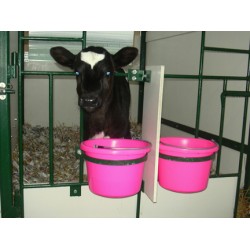Parasites, such as liver fluke and gastrointestinal worms are some of the most important problems limiting profitability of intensive sheep farming.
Fluke
Liver fluke infection is caused by the parasite Fasciola hepatica and it infects the liver of both sheep and cattle. Part of its life cycle takes place in the snail Limnea truncatula and without snails, the parasite cannot complete its life cycle. This means that conditions ideal for the snail hosts (mild and wet) will result in a greater challenge to the sheep. In late spring/early summer, there are large numbers of snails present and this can give rise to high levels of fluke infections which can give rise to the autumn fluke challenge to sheep.
Disease can be acute, sub-acute or chronic with acute causing immediate effects, sub-acute causing problems over a period of weeks and chronic disease apparent months later. The type of disease depends on the level of infection.
Acute fasciolisis can cause sudden death due to liver damage caused by the parasite. Deaths commonly occur from august to October and can happen to seemingly healthy sheep.
Sub-acute fasciolisis can cause rapid loss of body condition, poor fleece quality, loss of appetite and weakness. This can cause deaths from October onwards.
Chronic fasciolisis causes poor body condition, poor fleece quality and sometimes, bottle-jaw. Affected sheep may not die immediately but can die when metabolic demands add to the problems of fluke infection around lambing time. Although the effects of this are less sudden, the costs can be greater.
Treatment.
Oral drenching with Triclabendazole is effective at killing fluke and drenched sheep should be moved onto clean pasture to prevent reinfection or re-treated regularly.
Worms
Parasitic gastro-enteritis can affect sheep of any age and can cause big problems if left untreated.
Infestation with worms tends to cause, profuse diarrhoea, reduced performance and weight loss. In some cases it can also cause emaciation, anaemia and death.
The important infections are Nematodirosis (affecting lambs), Teladorsagia, Haemonchus contortus and Trichostrongylus.
Nematodirosis is an important disease that can infect young lambs and outbreaks can cause diarrhoea and in severe cases, sudden death. Infected lambs show faecal staining around the back end, can lose condition and may become dehydrated.
Teladorsagiosis is typically a problem of growing lambs in mid to late summer. As with other worm infections, it can cause diarrhoea and loss of condition.
Haemonchosis feeds on the blood and therefore symptoms do not usually include diarrhoea. More usual symptoms are anaemia, submandibular oedema and increased heart and breathing rates. It can also cause weakness and loss of condition.
Trichostrongylosis can affect both lambs and adult sheep and it’s most obvious symptom is the dark-coloured, foul-smelling diarrhoea.
Treatment.
Treatment for the above infections generally involves an oral anthelminthic. To prevent/control infection, avoiding pastures known to be infested can help if practical. Prophylactic treatment of ewes with anthelminthics can help to reduce the output of eggs and therefore reduce the challenge to lambs. If lambs are grazing contaminated pasture then prophylactic treatment is essential to preventing infection.
Click to see our range of wormers.




